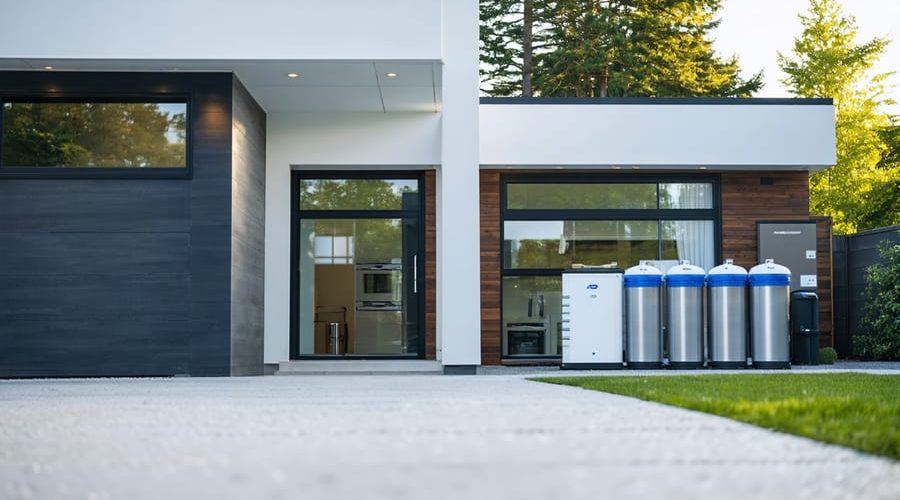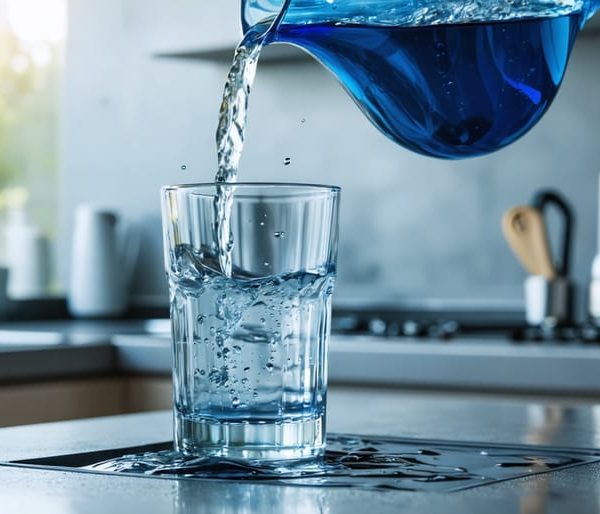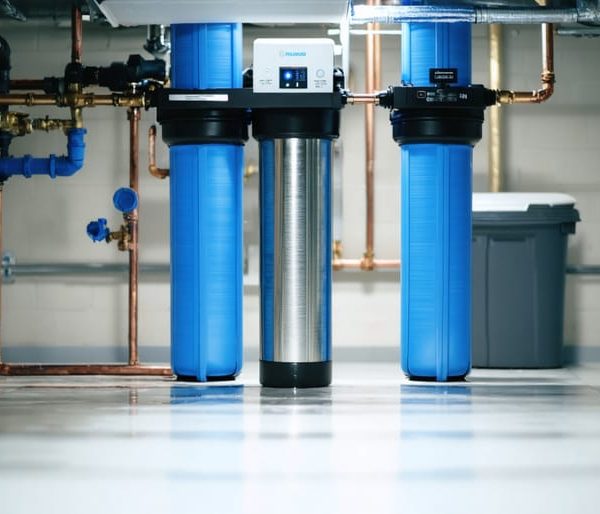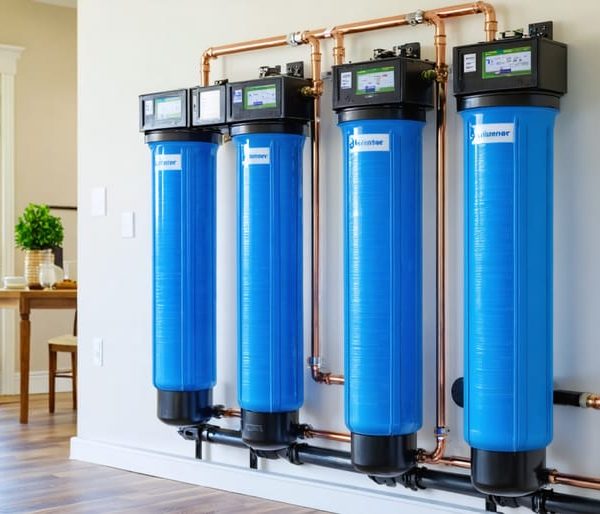Imagine every drop of water in your home passing through a sophisticated filtration system, ensuring clean, safe water from every tap, shower, and appliance. A whole house water filtration system acts as your home’s central defense against contaminants, operating at the main water line entry point to treat water before it reaches any faucet in your house.
Unlike single-point filters that protect individual taps, these comprehensive systems safeguard your entire household water supply, removing sediment, chlorine, heavy metals, and other harmful substances that could affect your family’s health and your home’s plumbing infrastructure. Think of it as a guardian that works 24/7, filtering thousands of gallons of water to deliver consistent quality throughout your home.
Modern whole house filtration systems combine multiple stages of filtration, from sediment pre-filters that catch larger particles to activated carbon filters that remove chemicals and improve taste. This systematic approach not only ensures safer drinking water but also extends the life of your appliances, reduces maintenance costs, and provides peace of mind with every water-based activity in your home.
Whether you’re concerned about water quality, protecting your investment in home appliances, or simply want the confidence of knowing your water is clean at every outlet, a whole house filtration system offers a comprehensive solution that addresses these fundamental needs.
What is a Whole House Water Filtration System?
Key Components
A whole house water filtration system consists of three primary components working together to deliver clean water throughout your home. The pre-filter, typically located at the system’s entry point, captures larger particles like sediment, rust, and debris. This initial filtration stage protects and extends the maintenance and longevity of subsequent components.
The main filter tank, the system’s heart, contains specialized media designed to address specific water quality issues. This component might use activated carbon to remove chlorine and organic compounds, KDF media to tackle heavy metals, or other materials depending on your water concerns. Some systems incorporate multiple media types for comprehensive filtration.
The post-filter serves as the final purification stage, catching any remaining fine particles and ensuring optimal water quality before distribution throughout your home. This component often includes additional carbon filtration or UV treatment to eliminate any surviving bacteria or microorganisms. Together, these three components create a robust filtration system that provides clean, filtered water at every tap in your house.
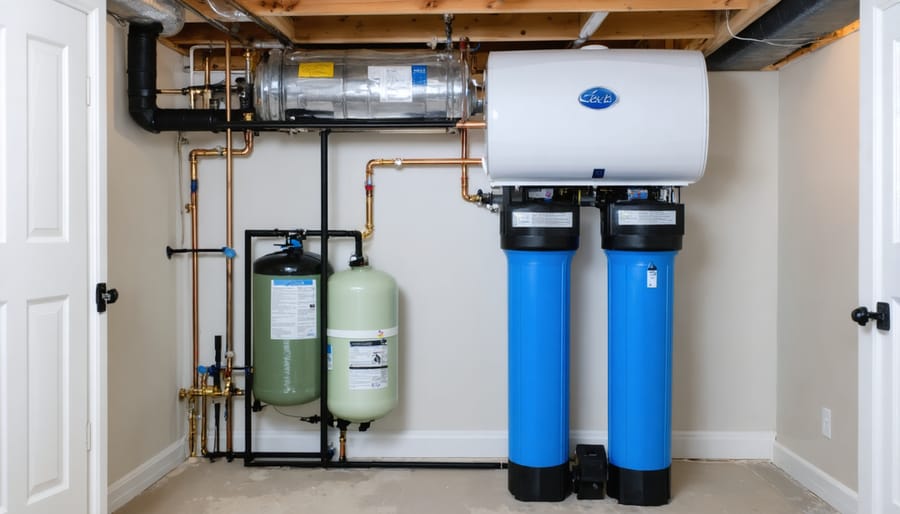
Installation Points
A whole house water filtration system connects to your home’s main water line where it first enters your house, typically near the water meter or main shut-off valve. This strategic placement ensures that every drop of water flowing through your home receives treatment before reaching any faucet, shower, or appliance. In most homes, this connection point is located in the basement, garage, or utility room.
The installation requires sufficient space for both the main filter unit and any pre or post-treatment components. Ideally, the system should be installed in an area that’s easily accessible for maintenance and filter changes. Professional installers will also ensure proper bypass valves are in place, allowing you to redirect water flow during system maintenance without disrupting your home’s water supply.
For homes with well water, the filtration system is typically installed after the pressure tank. In city water setups, it’s placed after the water meter but before the water heater and any branch lines that feed different areas of your home. This configuration maximizes the system’s effectiveness while protecting all your water-using appliances and fixtures.
How These Systems Protect Your Home
Multi-Stage Filtration Process
The multi-stage filtration process in a whole house water system works systematically to deliver clean water throughout your home. The journey begins at the pre-filtration stage, where large particles like sediment, rust, and debris are captured. This initial step protects subsequent filters and extends the system’s lifespan.
Next, water passes through activated carbon filters, which remove chlorine, volatile organic compounds (VOCs), and other chemicals that affect taste and odor. These filters use specially treated carbon with countless tiny pores that trap contaminants while allowing clean water to flow through.
The third stage often involves mineral filtering, targeting specific water issues like hard water minerals, iron, or manganese. Some systems incorporate water softening at this point, using ion exchange to remove calcium and magnesium.
For advanced purification, many modern systems include UV water treatment technology, which neutralizes harmful microorganisms without using chemicals. This stage is particularly effective against bacteria, viruses, and other waterborne pathogens.
Finally, a post-filter ensures that any remaining particles are caught before the water enters your home’s plumbing system. This comprehensive process results in clean, fresh-tasting water from every tap in your house, protecting both your family’s health and your home’s plumbing infrastructure.
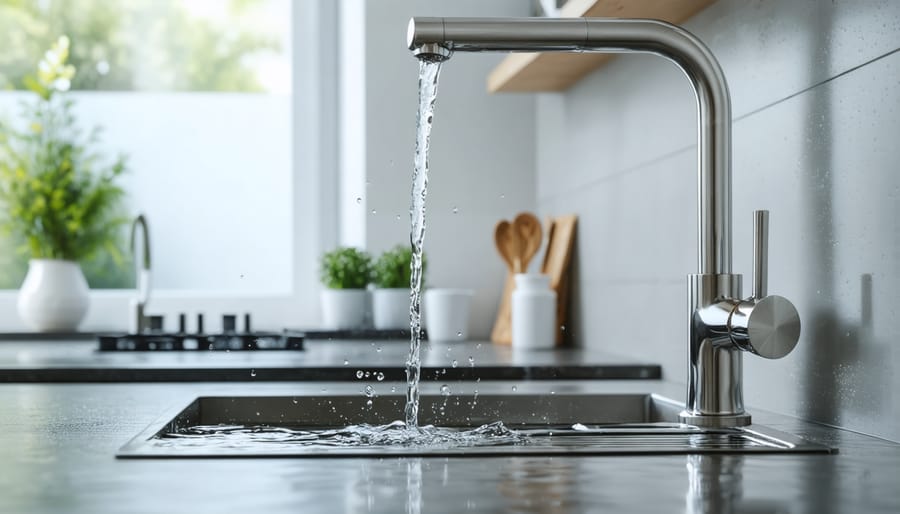
Types of Contaminants Removed
A whole house water filtration system effectively removes various contaminants from your water supply, ensuring cleaner, safer water throughout your home. Here are the main types of contaminants these systems target:
Sediment and Particulates: The first line of defense removes sand, dirt, rust particles, and other physical debris that can cause cloudy water and damage your plumbing fixtures.
Chemical Contaminants: These systems filter out chlorine, chloramines, and volatile organic compounds (VOCs) that municipalities often use in water treatment. They also remove pesticides, herbicides, and industrial chemicals that may leach into water supplies.
Heavy Metals: Common toxic metals like lead, mercury, and copper are effectively filtered out, protecting your family from potential health risks associated with metal contamination.
Biological Contaminants: Many systems include UV sterilization or specialized filters to eliminate harmful microorganisms such as bacteria, viruses, and parasites.
Scale-Causing Minerals: While some beneficial minerals are retained, excess calcium and magnesium that cause hard water and scale buildup are reduced to protect your appliances and plumbing.
The effectiveness of contaminant removal depends on the specific filter types and technologies used in your system. Multi-stage filtration systems typically provide the most comprehensive protection, with each stage targeting different types of contaminants for maximum water quality improvement.
Benefits for Your Home and Family
Health and Safety Benefits
A whole house water filtration system provides comprehensive protection for your family’s health by removing harmful contaminants from every water source in your home. These systems effectively eliminate common water pollutants such as chlorine, lead, pesticides, and volatile organic compounds (VOCs) that can pose serious health risks through ingestion, inhalation, or skin absorption.
By filtering water at the point of entry, these systems ensure that you’re not just drinking clean water, but also bathing, washing clothes, and cleaning dishes with safer water. This whole-house approach significantly reduces exposure to chlorine and other chemicals that can irritate skin, eyes, and respiratory systems during hot showers or baths.
For families with young children, elderly members, or individuals with compromised immune systems, having filtered water throughout the house provides an essential layer of protection against waterborne illnesses. The removal of sediment and harmful minerals also helps prevent scale buildup in pipes and appliances, which can harbor bacteria and other microorganisms.
Additionally, filtered water typically tastes and smells better, encouraging family members to stay properly hydrated. This improved water quality also helps preserve the natural oils in your skin and hair, leading to healthier-looking skin and softer hair.
Appliance Protection
A whole house water filtration system acts as a protective shield for your household appliances, significantly extending their operational lifespan and maintaining peak performance. Hard water minerals, sediment, and chemical contaminants can accumulate in appliances, leading to scale buildup, reduced efficiency, and eventual breakdown. By installing comprehensive filter and softener combinations, you can prevent these issues and protect your valuable investments.
Filtered water helps prevent scale formation in water heaters, washing machines, and dishwashers, allowing them to operate more efficiently and consume less energy. This increased efficiency not only reduces utility bills but also minimizes your home’s environmental footprint. Additionally, filtered water reduces mineral deposits on faucets, showerheads, and pipes, maintaining proper water flow and pressure throughout your home.
Appliances using filtered water require fewer repairs and replacements, resulting in significant long-term cost savings. For example, water heaters operating with filtered water can last 2-3 years longer than those exposed to unfiltered water. Coffee makers, ice makers, and other water-using appliances also benefit from cleaner water, producing better-tasting beverages and clearer ice while maintaining their functionality for extended periods.
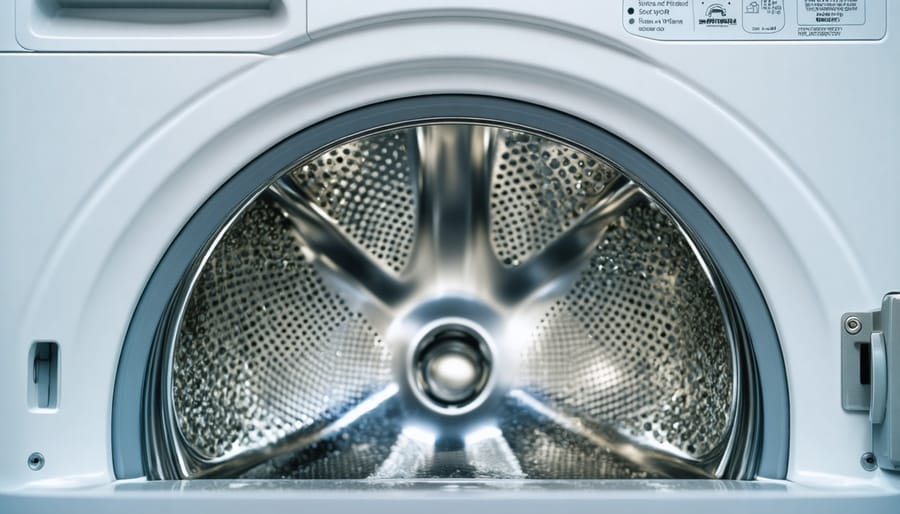
Environmental Impact and Sustainability
Whole house water filtration systems offer significant environmental benefits that align with sustainable living practices. By treating water at the point of entry, these systems reduce the need for single-use plastic water bottles, helping to decrease plastic waste in landfills and oceans. A typical family switching to filtered tap water can prevent hundreds of plastic bottles from entering the waste stream each year.
These systems also contribute to energy conservation. While they do require some electricity to operate, the energy consumption is minimal compared to the environmental cost of manufacturing, transporting, and recycling bottled water. Additionally, filtered water helps extend the lifespan of household appliances by preventing mineral buildup, reducing the frequency of replacements and associated waste.
Many modern whole house filtration systems are designed with sustainability in mind. Manufacturers are increasingly using eco-friendly materials and developing filters with longer lifespans. Some systems now incorporate recyclable filter components, and advances in filtration technology have led to more efficient water use during the filtration process.
The environmental impact extends to water conservation as well. By removing contaminants effectively, these systems eliminate the need for repeated flushing or running taps to achieve clean water. Some advanced models even include water-saving features that optimize filtration cycles based on actual usage patterns.
From a long-term perspective, whole house filtration systems support sustainable water management by protecting pipes from corrosion and reducing the need for harsh cleaning chemicals, which can harm aquatic ecosystems when they enter the water supply. This investment in clean water technology represents a step toward more environmentally responsible home water management.
A whole house water filtration system represents a significant but worthwhile investment in your home’s water quality and your family’s health. By understanding the various types of systems, their components, and benefits, you can make an informed decision that aligns with your specific needs and environmental values. These systems offer comprehensive protection against contaminants while potentially increasing your home’s value and reducing long-term costs associated with bottled water and appliance maintenance.
Remember that the best system for your home depends on several factors, including your local water quality, household size, and specific filtration needs. While the initial investment may seem substantial, the long-term benefits of clean, filtered water throughout your entire home often justify the cost. Consider consulting with water quality experts and getting your water tested before making a final decision.
By choosing an efficient and eco-friendly filtration system, you’re not only investing in your family’s health but also contributing to environmental sustainability by reducing plastic waste and chemical usage. Take time to research, compare options, and select a system that will serve your household’s needs for years to come.
